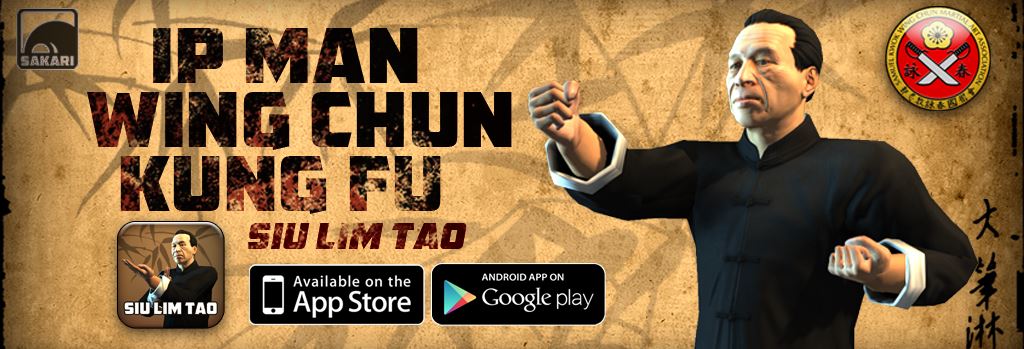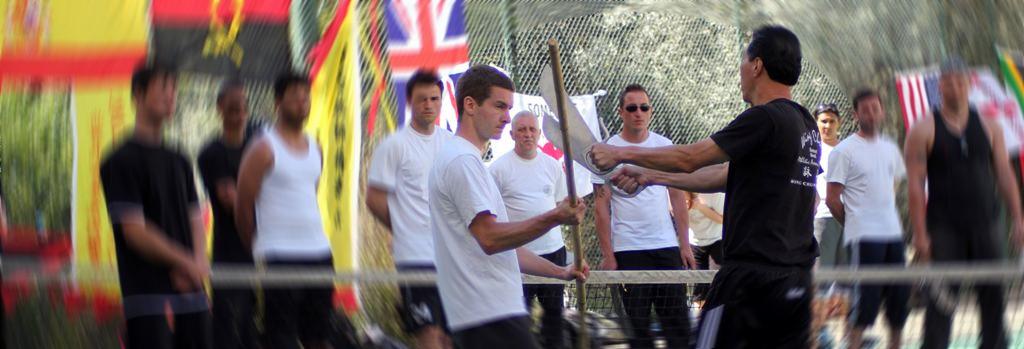The use of Softness in the Art of Wing Chun
Article by Steven Williams added on 17 Oct 2012.
Hard and soft energy use in Wing Chun Kung Fu
By Steven Williams
In Ip Man Wing Chun, we try to be soft: to yield to an opponent's attacking force rather than stop it. If this is to be a successful strategy then we need to know how to redirect incoming force so that we don't get hit. Imagine a car driving straight at you. Now imagine that you could somehow take control of it. The Wing Chun way is to reach for the steering wheel rather than the breaks.
"When you pour water into a teapot, it becomes the teapot"
- Bruce Lee
Here, perhaps the most famous Wing Chun practitioner of all, Bruce Lee, appears to be talking about adaptability; being able to harmonise with a situation. To some this might sound more like surrendering than fighting but Bruce Lee also talked about, "fighting without fighting". Water need not be stopped by an obstacle, it can flow around it, following the path of least resistance yet reaching it's target none the less. This is the art of softness.
If you are very tense then your movements may be clumsy and stiff, you will get tired easily due to unnecessary effort. If you are very limp, your posture will be weak and your movements may be slow and unresponsive. Movement is a cycle of the tension and relaxation of various muscles. When we can harmonise the two opposites (hard and soft) then our movements will be smooth and skilful. If you want to bend your arm then your triceps must relax for your biceps to work effectively.
"Float like a butterfly and sting like a bee"
- Muhammed Ali
This famous boxing quote elegantly describes the interplay of soft and hard within the sport. If we use the terminology of Chinese martial arts, boxing can be thought of as a hard style and Wing Chun as a hard-soft style. The difference lies in how they use tension. Hard styles use muscular power and they hit like an iron bar: solid and unyielding, knocking the target back. Soft styles avoid unnecessary tension and strike like a whip: soft yet penetrating beyond the surface of the impact. Hard-soft styles are something of a compromise and can be thought of as striking like an iron flail: the chain is soft but the head impacts hard upon the target before becoming, once again, simply part of a soft chain.
So if a 'hard' style like boxing is talking about the importance of softness (even if Ali did use the quote to taunt an opponent) then surely as a 'hard-soft' style, Wing Chun practitioners should consider softness as a very important part of their art.
"To be hard is easy. To be soft is hard"
- Martial proverb
Many of us already know that it's important to be soft in Wing Chun and some of us even work very hard at trying to relax our muscles. What often continues to hold us back is the mental part.
Why do we train? Is it to learn to fight, to defend ourselves, for health or for pride? Each of these motivations could be harmed if we were to lose a fight in the street. In a street fight, it's good to win: then you can decide on the price the loser pays. If your skill is high then you can afford to be charitable; if you lose, your opponent may not be so generous...
So if the goal of fighting is to win then does the goal of training have to be the same? I would suggest that the aim of training is to learn HOW to win, rather than the winning itself. If I 'lose' in a class then it's only my pride that is a casualty.
"Invest in loss"
- Chinese proverb
Herein lies a problem: human nature means that we don't like to lose. That in itself is not a bad state of affairs but when it comes to training it's often the losing that teaches us how to improve. This concern with our pride, our status among others, can hold us back.
Pride can be thought of as being mentally hard, unyielding; tough but inflexible. To be soft might mean not to care if we win or lose but that attitude can have its own problems. If we can mix the hard and the soft, know the value of winning but also appreciate and explore the experience of losing, then we need not be concerned with our pride. It's something that many of us (the author included) need to work on.
"To bend like a reed in the wind, that is real strength"
- Taoist philosophy
Theory is all very well but how do we put these ideas into practice? Understanding, attitude, application. Yes, it's the usual story of hard work; that is what 'kung fu' means after all. I hope that this article will help a little with the understanding; thought, study and experience should help it to develop further.
Attitude has to do with being prepared to take one step back in order to take two steps forward: to be able to surrender ground (soft idea) in order to progress further (hard idea) than you would otherwise be able to. Respect your sifu and training partners but don't forget to respect yourself. The true spirit of training should be that of cooperation (soft idea) rather than competition. But be sure to try to provide a good test for each other (hard idea), or you'll be unprepared for a determined opponent. These ideas are so simple and yet they are so often overlooked or taken for granted. The better your understanding, the better your attitude can be.
"Speak softly and carry a big stick; you will go far"
- Proverb
Application can be talked about almost endlessly but I'll try to provide some simple examples. If we think about pak sau, it's usually one of the first techniques we learn. If we apply it too aggressively, we may not be able to use the same hand immediately afterwards. Suppose you turn as you apply the pak sau. If you want to follow up with a strike from the hands then you must be relaxed. If you want to fak sau with the same hand then it must be relaxed to move quickly. Your mind must also be relaxed or you won't be able to recognise a good opportunity for a fak sau from a poor one - your movements will be robotic and predictable rather than flowing and spontaneous.
Suppose from the same position that instead of applying a fak sau, you wanted to use a turning punch with the opposite hand. The hand that applied the pak sau must still be relaxed or else you will find it difficult to turn. Just as the first turn was in unison with the pak sau, so must both arms be in unison with the next turn or it will be inefficient. You must have finished the first movement, both in body and mind, for the second one to be free.
"Let your opponent show you how to defeat him"
- Wong Shun Leung
Chi sau in Wing Chun and the equivalent exercise of 'pushing hands' in Tai Chi are often said to be developing the skill of 'listening'. This type of listening however is not done with the ears but with the skin. How many of us can truly say that we are good listeners? It's not just good hearing (or sensitivity) that's required, you also need an open mind.
Chi sau is often compared to the game of paper, stone and scissors, with the simple explanation of one technique defeating another; but how many times in chi sau do we see someone try to force a technique through where there isn't really a gap? This mistake is most often due to insufficient listening skill and overcommitting in attack (too much hard, not enough soft). It's hard to listen when we're shouting.
If you try hard enough, you can cut paper with a stone but it's much better to learn to use scissors. We are often reluctant to do this because first it means putting down the stone. Sometimes we have to take a step back before we can go forwards.
"All things excellent take time"
- Chinese proverb
If you look at the yin-yang symbol, you can see that where either of the two sinuous halves of the circle is at it's fullest, there lies a smaller circle of the opposite colour. Yin and yang are in a state of continual interplay. Where one becomes full, the other is born and begins to grow. When you are at the very top of the hill, all directions lead down.
The symbol represents a harmonious dynamic, however static it may appear on the page. Learn to find the soft within the hard and the hard within the soft. Hard need not mean stubborn and soft need not mean lazy. Hard styles can still be fluid and soft styles can still be direct. The recipes may be different but the ingredients are the same.
If you can learn to triumph as a weakling then you need not fear stronger opponents. Yes, it is possible to be too soft but how many times do you feel that a training partner is too tense? The next time you feel that, try telling yourself to relax instead of your opponent and see what happens... you might be surprised.
Good luck with your training,
Steven Williams
Steven's Liverpool club http://www.sifustevenwilliams.com/



